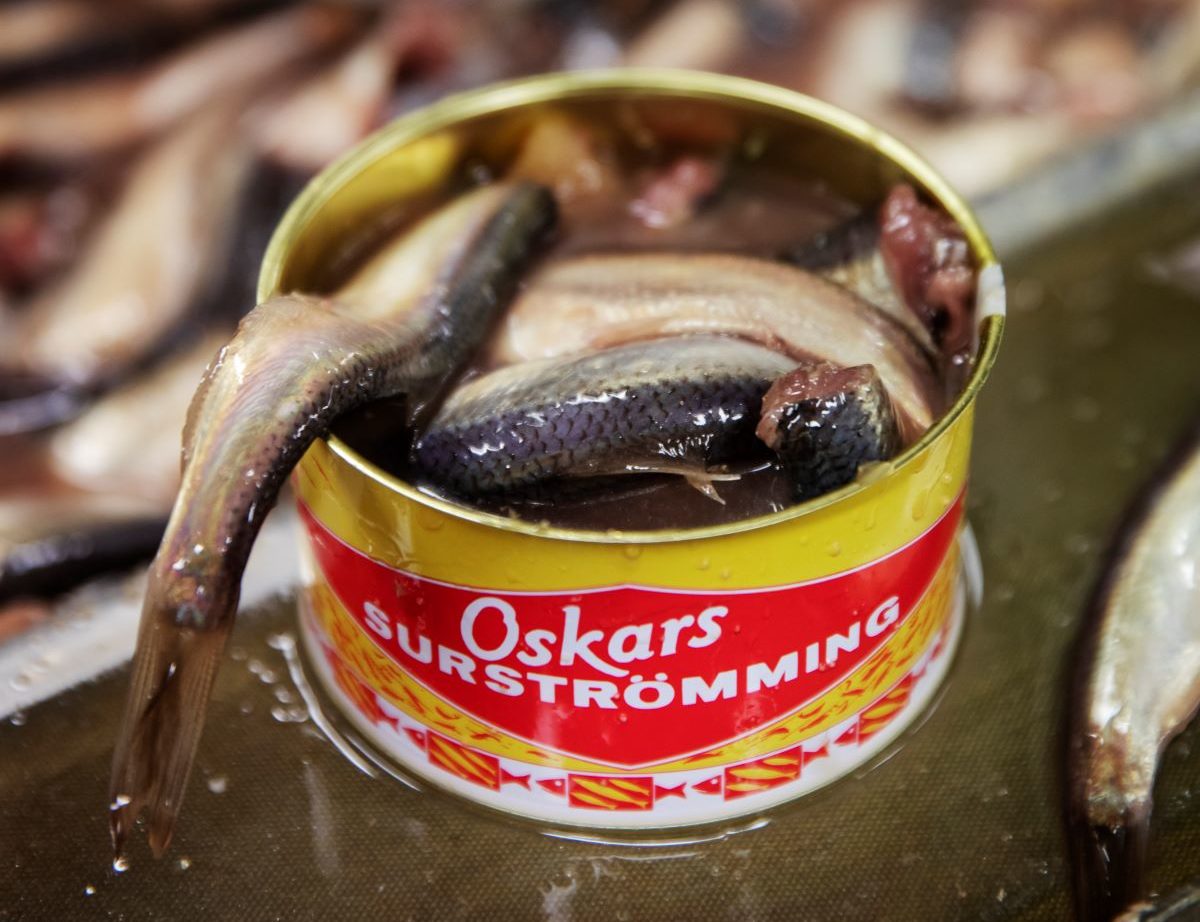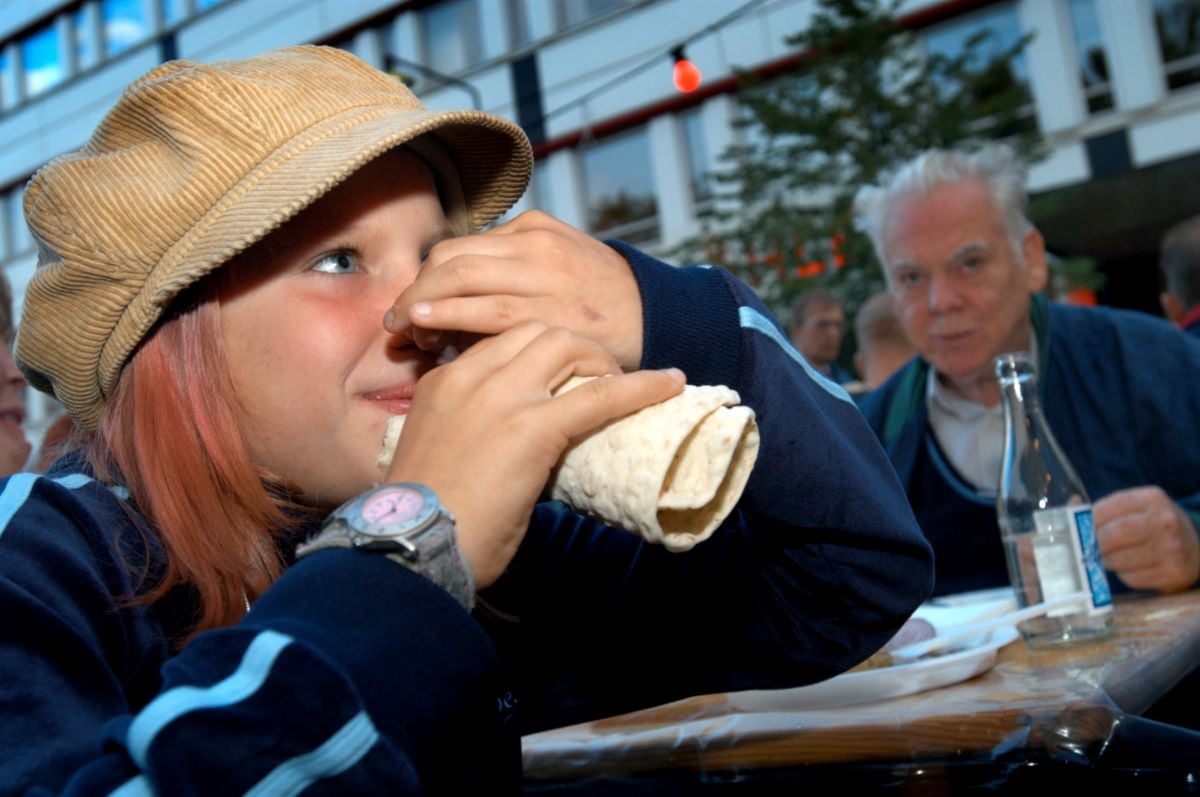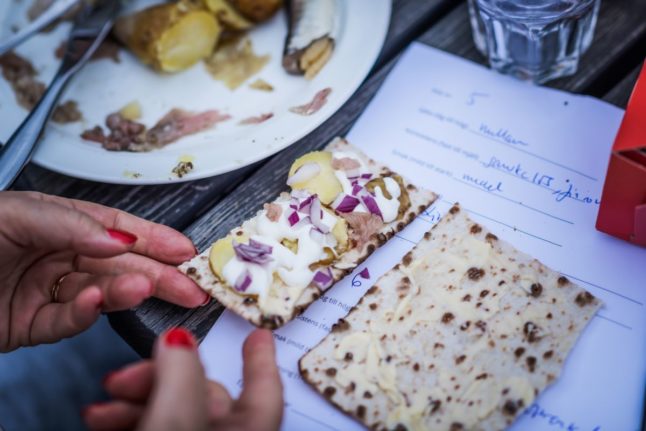It was my wife’s idea. Some sort of tribute, I think, to her parents’ origins on the coast of Västernorrland, home to the main producers of Sweden’s intriguing fermented herring delicacy.
“Surströmming for real,” she wrote in her invite. “All the trimmings. No messing about with alternative food. A party for those who love surströmming or want to try it properly. Not for those disgusted by the idea or who know that they hate surströmming, nor for those who wonder if we might be able to prepare something else. A true culinary and social experience.”
EDITOR’S PICK:
In the end, only one of her many invitees – a former Lund university colleague still deeply involved in the institution’s odd traditions, societies and fellowships – took her up on the offer.
After I’d invited Emma, The Local’s editor, and absolutely everyone else I know, we eventually managed to cobble together ten guests willing to explore Sweden’s most extreme taste frontier.
We laid the table out according to tradition, with mandelpotatis, or “almond potatoes”, lots of finely chopped red onion, tunnbröd, or “flatbread”, in both hard and soft varieties, gräddfil sour cream, and an enormous bunch of fresh dill.
I had ordered a can of Rovögerns surströmmingsfilé, made by the the brothers Lars and Björn Lundgren and their friend Lars Eklund, three fishermen turned fermenters from Västerbotten. Their fermented herring had been named “bäst i test” by the Aftonbladet newspaper back in 2018, cost a chunky 325 kronor for 250g, and has since sold out.

We then set up a special can-opening table a safe ten metres from the guests, with a plastic bag to catch any unexpected explosions and a silver tray on which to bring the delicacy to the table.
As I prepared to pierce the can, there was a real sense of excitement, both for me and the guests. Once fermented herring is canned, it continues to ferment, meaning gases and pressure can build up. The juices can shoot out, and the gases are famous for their powerful odour.
In the event, it was an anticlimax. This was only two days after the Surströmmingspremiär, the official start to the fermented herring eating season, and the Lundgren brothers had only canned the fish a few weeks previously.
Despite the absence of an explosive build-up, it didn’t take more than a few seconds for the smell to hit me, stomach churning certainly, but no worse than the more mature French cheeses.
“Jag känner vidrigheten komma hit här nu!” exclaimed one of the guests a moment later with a laugh. “I can detect the revoltingness coming over here now!”

I then did a round of the table, depositing one glistening, slimy filet on top of the potato, sour cream, onion and dill rolls each guest had prepared, and returning the can to safety ten metres away.
The excitement, the smell and the anticipation of the taste, acted as an icebreaker and the party was already high spirited as each guest took their first bite.
I’d eaten fermented herring only once before, for a YouTube video showing the reactions of my Somali, Kurdish, Iranian and Arabic colleagues at Sweden’s public radio broadcaster, and found it surprisingly tasty. This time was no different. Fermentation turns the herring into an umami bomb, the intense fishy flavours cutting through and enhancing the potato, dill and onion.
We followed up with snaps and a rousing chorus of Helan går, Sweden’s best known drinking song, after which the party became more and more like a kräftskiva, the crayfish-eating parties that are the August entry in every Swede’s social calendar.

For me, though, the surströmming variety was so much better. The excitement of opening the can and the shared experience of eating this traditional and far from ‘lagom’ food, was bonding in a way eating crayfish is not.
Maybe a few decades ago, eating crayfish felt as special, but with home-grown Swedish crayfish long since replaced for most people by farmed ones imported from China and Turkey, it doesn’t feel so much of a treat.
Then there’s the joy in celebrating an artisanal tradition which legend suggests goes back to the time of Gustav Vasa, the founder of the modern Swedish state. Apparently, the powerful merchant city of Lübeck cut off supplies of salt to Sweden, because Vasa had failed to pay his debts, forcing herring producers to ferment their fish, which uses less of it.
We’ll be having another surströmming party next year.



 Please whitelist us to continue reading.
Please whitelist us to continue reading.
Member comments